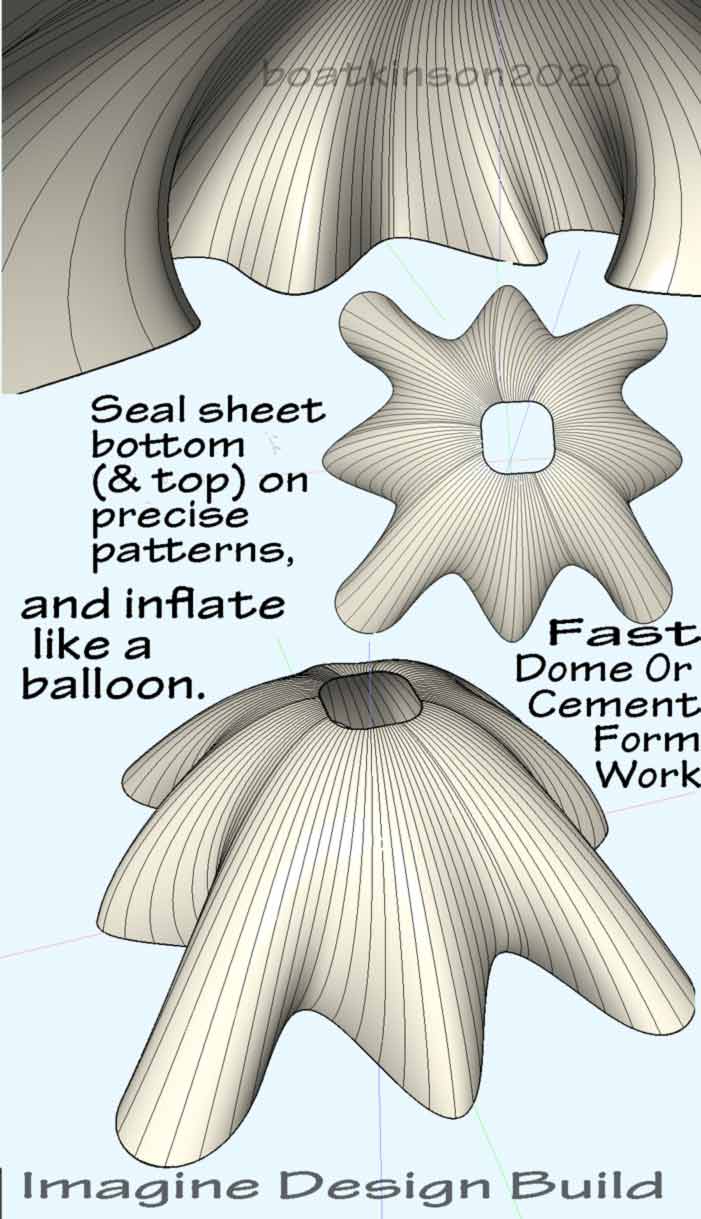
Complex Inflated Form Derivation From One Economical Seamless Sheet

My project of carefully working out geometry for my own ideas seemed unique at first search, but later on with multiple key word searches, google found a website promoting already existing structure, but with differing applications and with other construction methods, and I thought the other example is well worth looking at! Instead of high end examples, my focus is on more affordability or otherwise more features for any given budget. (Careful engineering study time is recommended before building such things, just as I put in a lot of time in my model studies and internet research.)
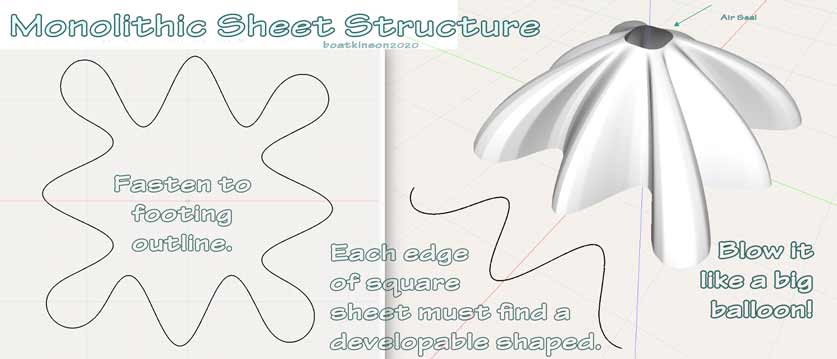
My humble page is inspired by long existing examples of forming cement on inflated form work and also exploits additional innovations as yet not found on google, for inflatable shotcrete forming methods, where useful structures are actually built internationally. Google's image-search for: "inflated form" + cement counts 22,900 results, checked on August 2 of 2020, which shows the widespread use of related methods. Let me add that I never committed to buy into shotcrete nor it's popular challenger, (originally the one and only Tirolessa sprayer, and now there are increasing numbers of competitive sprayers today), as I instead focussed solely on a one man development of a variety of one man systems, such as a specific ring reinforced coffer building system, (which was exceedingly challenging all in itself). Therefore this page is just added to a growing list of competitive strategies for building, thin shell structures.
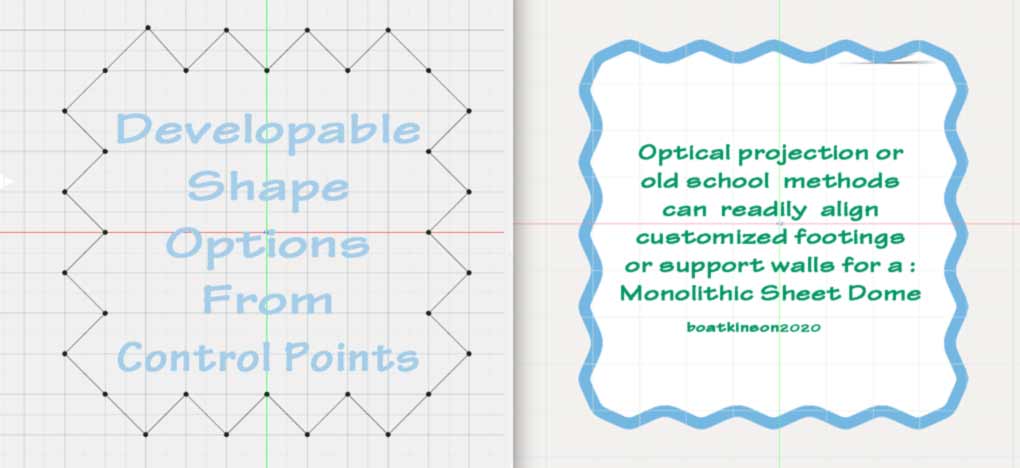
Designers and builders have a dictionary word available: "developable", which actually means that a surface can be unfolded flat, (as this page explores the workable geometries). I wanted tools soon as it was affordable on the personal computer. I was dumbfounded with little guidance back in 1992, staring at a DOS 5 black screen OS, taking days to discover that I needed to type in the word "win", (heh, heh). Several years of difficult learning followed at great costs, for little gain, as compared with today's availabilities and today's simplified user interfaces, for current personal computers and softwares. I am so grateful for the tools we now have.
I wanted to build with concrete and other benign composite materials generally, ever since I was a child, yet as a stubbornly free-thinker, I was usually consigned to work alone through most of life. Except of course the many kinds of paying jobs, which required more standardization. To otherwise explore building unlike the local building styles pays only in experience, like the bigger lessons of life, if we learn by testing new things, and then honestly describe our experience, (such as 25 years of computer modeling plus 50 years building many related examples, no matter the lack of salability).
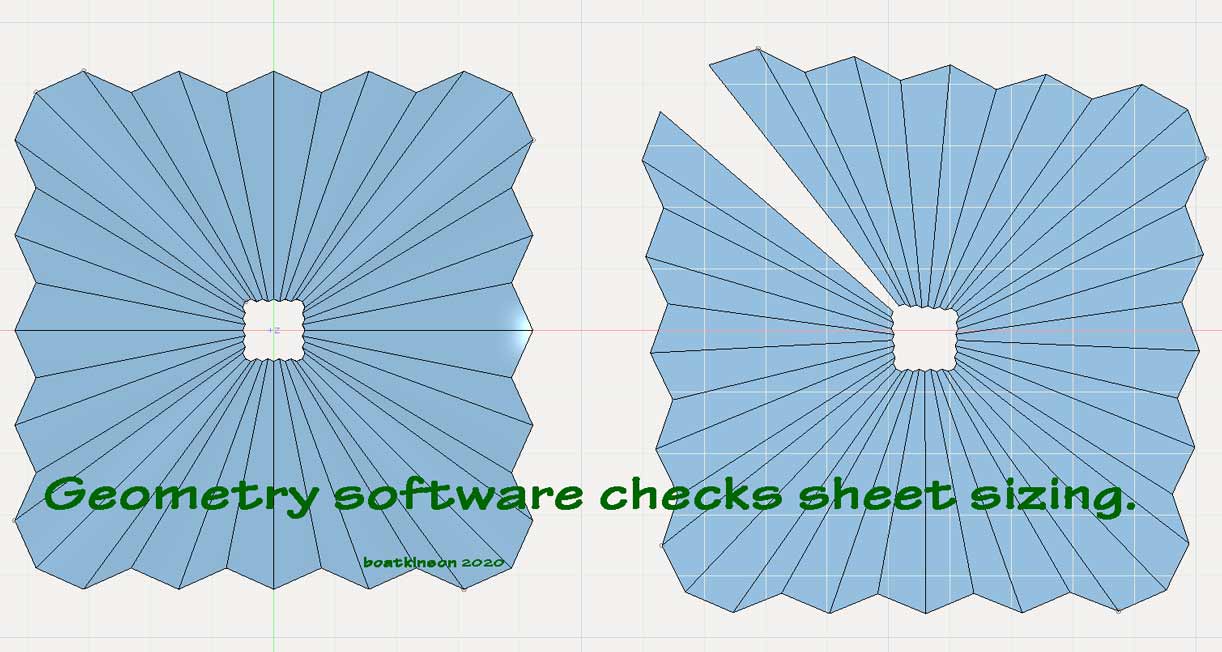
Among the fabulous 3D tools, is the "unfolding tool", which can be used to verify whether a beautifully curved surface can in fact be derived from one (low cost), single, flat, plastic sheet. So far, human mathematical strategies are still required to fill in the gaps of proving out the physical feasibility. I worked backwards, intuitively, to generate a contiguous 3D surface, while maintaining the rule that only planar facets be used, so that today's capability of 3D unfolding tools could prove it is equivalent to one flat sheet when unfolded. I say 'close' because plastic actually stretches and the level of software power required to allow for material stretching characteristics far exceeds my budget.

We can easily verify with a cloth napkin, that if we lift it from the center only, the edges will droop downwards somewhat randomly. Otherwise we can pleat the outer edges as modeled in picture. The idea that drooping could predicted came to mind, and so I began exploring for controlled droops which also introduce a corrugated effect. It is well known that corrugated paper forms up a durable cardboard box; and therefore I wanted to strengthen a roof-like form by incorporating corrugation. This is all generalities at this point, needing further checking before building a physical project.
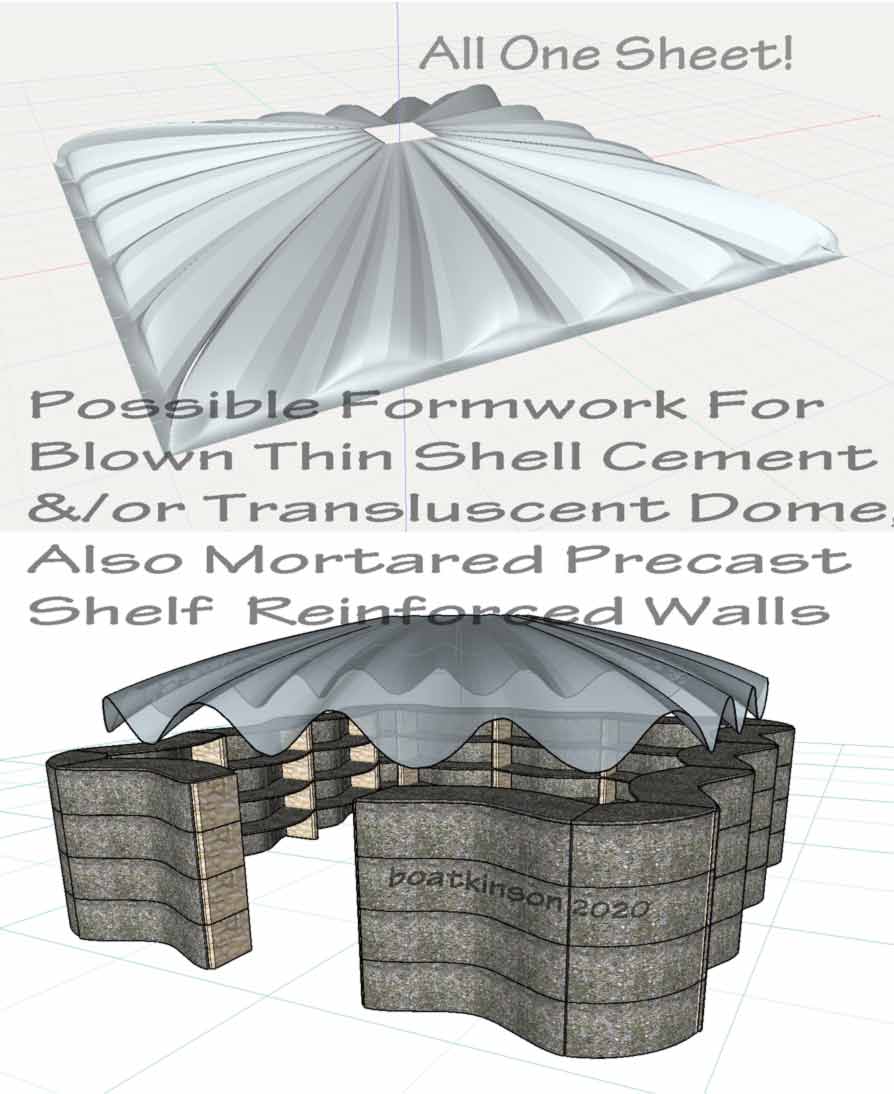
The extent of corrugation can be increased by adding curvature to the upper form work near to the sheet center. However, I was already feeling too restricted because of the usually limited sheet sizes, which in America is sold in roles just 20 feet wide (or almost 6 meters wide). That width is used up quickly in a small sized covering as one sheet, which reduces the possible clear span of roofing. So that sizable structures do need some seaming, done through straight seaming (done before installation), a task which is much easier than curved seaming of plastic.
Page Two continues by adding more thoughts to this subject. For larger roof spans we are forced to seam sheets together, or purchase adequately larger sheets. There are always a trade-offs, but this one still intrigues me.
![]()
Comments and discussion is welcomed, but is limited to email, until I can find an affordable "comment box", (as I am currently limited to using an antique software to post these webpages, and reserve my study time to other multiple priorities).
My home page or index.html is here with scattered pages extending into the long past.
Following is my earlier related promo (sized for printing).
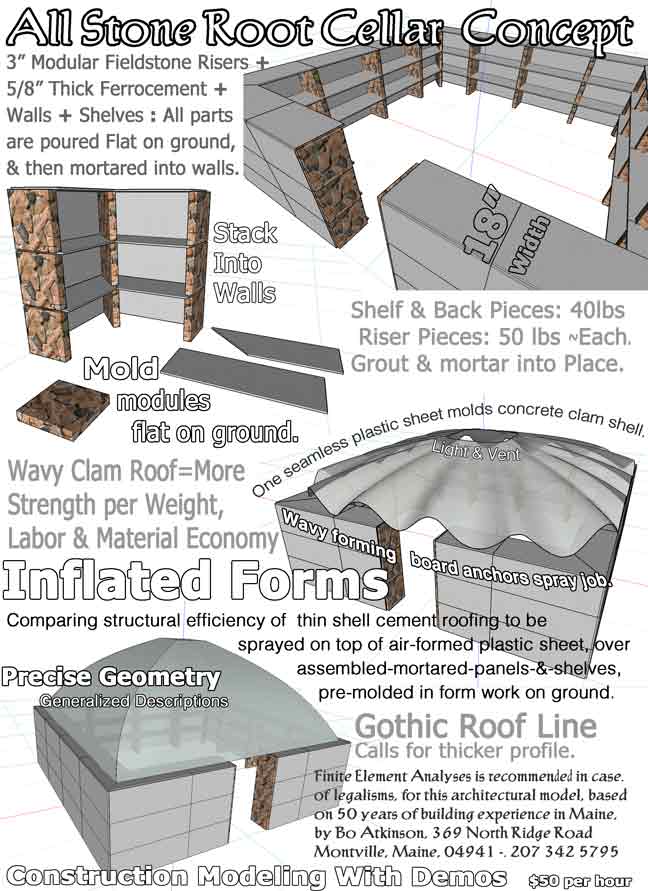
Page two has continued the discussion on August 9, 2020.
Note: These pages are placed in the The content on this website, http://harmoniouspalette.com, is placed in the public domain only as a free exchange of ideas and as a "hard studied wish to serve life". The author assumes no responsibility for the improper use of the concepts in these web pages. All relevant laws of life and local codes should be verified and observed before any building or experimentation proceeds. discussion is welcome, please write. Bo Atkinson and are furnished "as is". The author assumes no responsibility for the use or misuse of the concepts in this series. All pertaining laws should be satisfied, in duplicating or testing my concepts or descriptions, as these are posted on my linked pages.